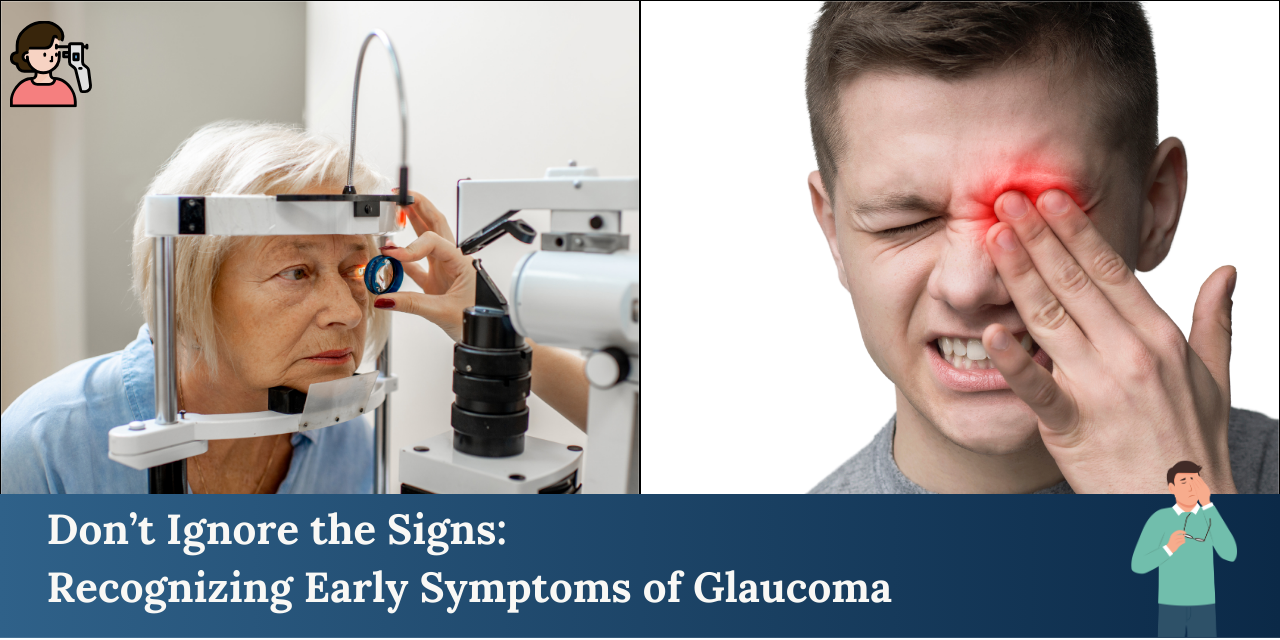Glaucoma is a serious eye condition that can lead to irreversible vision loss if left untreated. It is often referred to as the “silent thief of sight” because it can progress without any noticeable symptoms until significant damage has occurred. Understanding the early signs of glaucoma is crucial for timely intervention and effective glaucoma treatment in Ambala. In this article, we will explore the early symptoms of glaucoma that you should never ignore.
Understanding Glaucoma
Glaucoma is primarily caused by increased pressure in the eye, known as intraocular pressure (IOP). This pressure can damage the optic nerve, which transmits visual information from the eye to the brain. There are different types of glaucoma, but the most common forms are open-angle glaucoma and angle-closure glaucoma.
Early Symptoms of Glaucoma
⏯ Gradual Loss of Peripheral Vision
One of the earliest symptoms of glaucoma is a gradual loss of peripheral vision. Individuals may not notice this change initially, as it often occurs slowly over time. You might find yourself having to turn your head to see objects on the sides, indicating that your side vision is diminishing. If you experience this, it’s essential to seek an eye examination.
⏯ Tunnel Vision
As glaucoma progresses, it can lead to tunnel vision, where you lose your ability to see objects outside of your central vision. This narrowing of vision can severely impact daily activities, making it difficult to drive, read, or recognize faces. If you notice a significant reduction in your field of vision, consult an eye care professional immediately.
⏯ Blurred or Hazy Vision
Blurred or hazy vision can be a warning sign of developing glaucoma. This symptom may appear suddenly and may be accompanied by a headache or eye discomfort. If you frequently experience blurriness, it’s important to get your eyes checked to rule out any serious conditions.
⏯ Halos Around Lights
Another early sign of glaucoma can be seeing halos or rainbow-colored rings around lights, especially at night. This symptom occurs due to changes in the eye’s lens or cornea and can indicate increased intraocular pressure. If you observe this phenomenon regularly, it is crucial to seek an evaluation from an eye specialist.
⏯ Eye Pain or Discomfort
While most types of glaucoma are painless, acute angle-closure glaucoma can cause sudden and severe eye pain. This condition may be accompanied by nausea, vomiting, and the appearance of a red eye. If you experience intense eye pain or any associated symptoms, seek emergency medical attention immediately.
⏯ Frequent Changes in Vision
If you find that your vision frequently changes, such as fluctuating between clear and blurry, this could be an indication of glaucoma. Sudden changes in vision can be alarming and should not be overlooked. It is advisable to consult with an ophthalmologist to determine the underlying cause.
Importance of Regular Eye Examinations
Regular eye examinations are essential for detecting glaucoma in its early stages. An eye doctor can measure your intraocular pressure and examine the optic nerve for signs of damage. Early detection significantly increases the effectiveness of glaucoma treatment in Ambala, helping to prevent vision loss.
Conclusion
Regular eye exams are vital for anyone diagnosed with glaucoma. The frequency of these exams can significantly impact the management of the condition and help preserve vision. For effective glaucoma treatment in Ambala, consult with an experienced ophthalmologist to establish a personalized monitoring schedule based on your specific situation.
For expert care in Ambala, consider visiting Dr. P.C Sharma at P.C.Sharma Eye Hospital, where advanced glaucoma treatments are available. For appointments, contact +91989608138.













